Intuitively, it seems you can effectively flip the board by applying a downward force to it as it comes up toward you, but your front foot will reach the ground first by doing so.
They use various expressions to solve this problem, such as "Don't flick down and flick upward." However, many people struggle with this trick, as their boards stick to their feet no matter how strongly they flick out their front feet.
I can assure you that a Kickflip is NOT about strength. What you should be doing, instead of forcing your front foot to give it a flick, is to direct your flick in the right direction by opening your front knee. Then, you can flip your board with the tiniest force.
In this article, we will analyze the motion of a Kickflip physically and physiologically to reveal the secrets to flipping the board effectively. Don't worry—you will get your Kickflip.
Summary
Why does flicking up flip the board?
The premise is that an object flips most efficiently when you apply a perpendicular force to its axis of rotation. By flicking your front foot upwards after the nose has lifted sufficiently, you can momentarily apply a vertical force to the board's axis of rotation, allowing it to flip effectively.
Tips for flipping the board?
Open your front knee. By doing so, you can apply a vertical force to the axis of rotation while dissipating the force of the front foot to the side of the nose.
How much force does a Kickflip require?
It is possible to flip the board with a very small force of at least 300 to 400 grams. This shows that you don't have to forcefully kick the board; just a gentle flick is sufficient.
Simulation
Hit the icon in the middle to start a 3D animation.
Premises: Physics of a Kickfilp
What it takes to flip a skateboard
We'll call the red line connecting the nose and tail the X-axis. A board flips most efficiently when a perpendicular force applies to the X-axis. Of course, the actual force does not have to be perfectly vertical. It is important that the force contains enough perpendicular components to the X-axis when broken down.

A reason that causes a rocket Kickflip
By now, you must have realized. If this is the only force that acts on the board, the tail won't lift, and you'll wind up doing a rocket kickflip. So, there's another force that has to work on the board.

The tail lifts by flicking the nose
Now, let's call the line connecting the toe and heel the Y-axis. Normally, in a Kickflip, the board rotates around this Y-axis as the front foot flicks the side of the nose, which is angled, dropping the nose and lifting the tail.
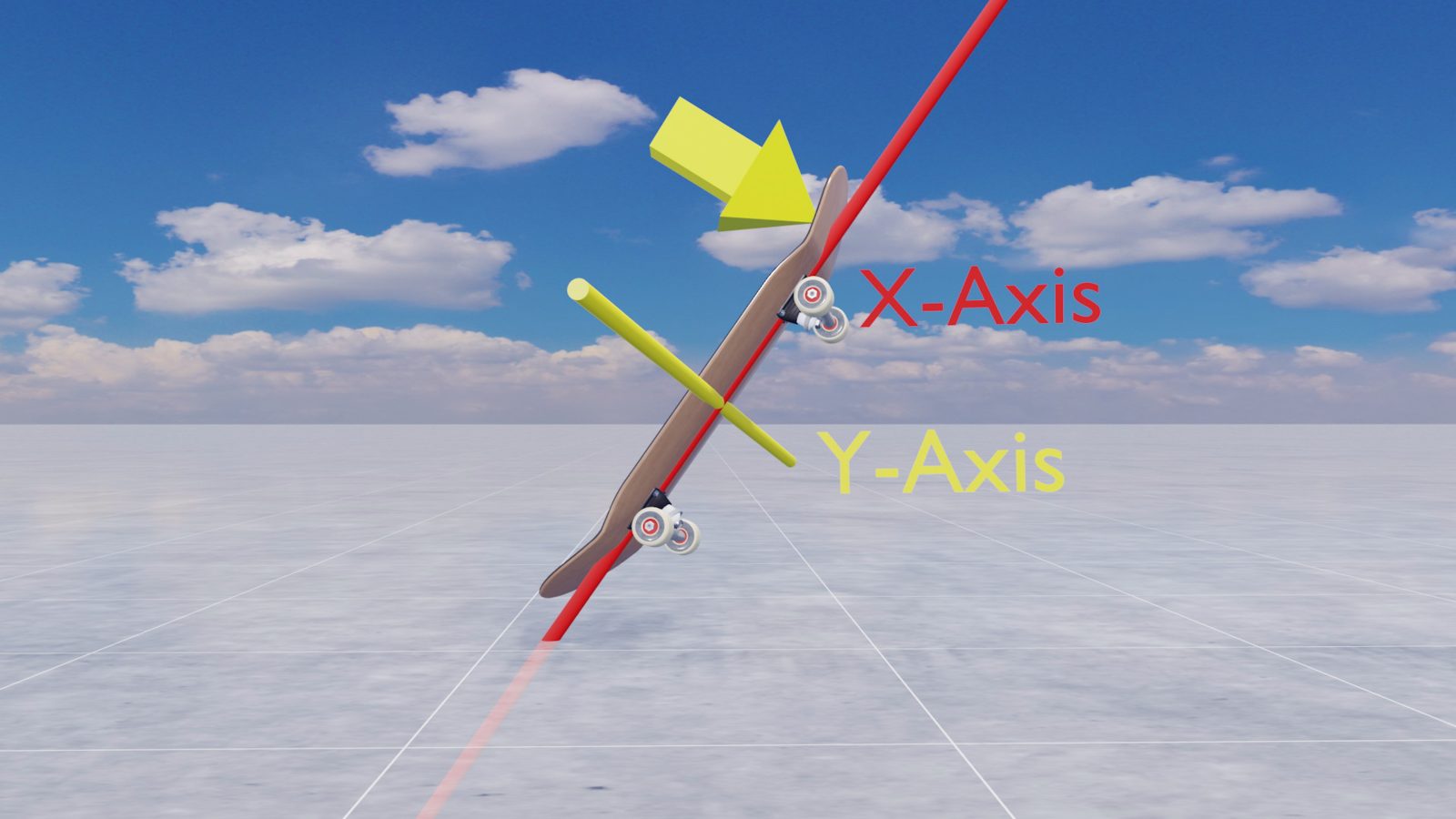
The amount force needed to Kickflip
In light of the amount of force the board needs to flip, as I said at the beginning of this video, it takes only 300-400 grams at minimum.
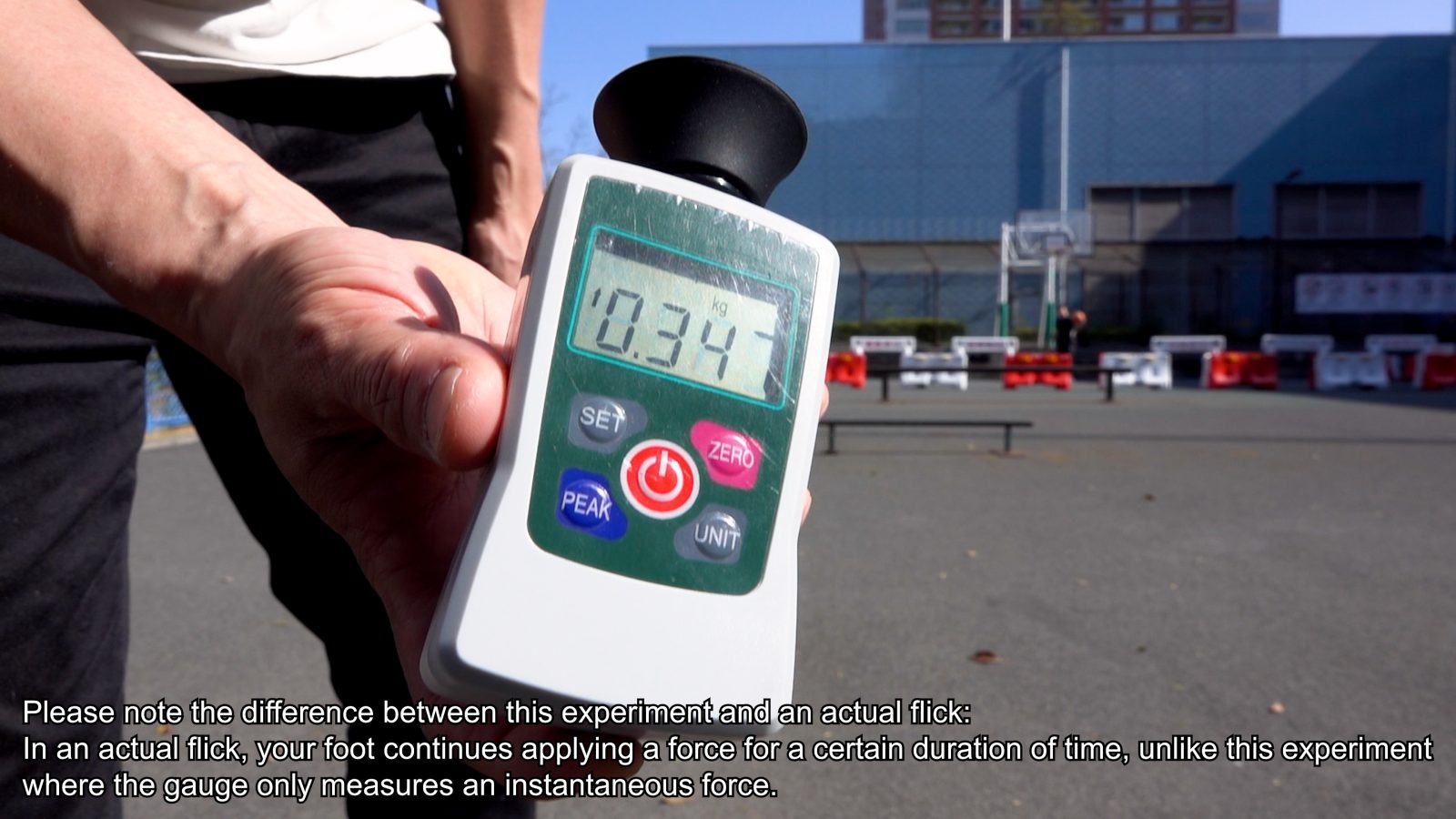
Why is a Kickflip so hard?
Human physiological tendencies
Based on these facts, the "physical logic behind the board's flip" is very simple, and "generating the power to make it happen" does not seem that difficult. So, what makes a Kickflip so hard? The answer lies in human physiological tendencies.

What makes you want to kick down
Generally, we are accustomed to extending our lower legs forward and pushing them down, as in walking. Therefore, in a sense, it is natural that you want to generate a perpendicular force on the X-axis by kicking down your front foot as the board rises toward you. However, of course, your front foot will reach the ground first.
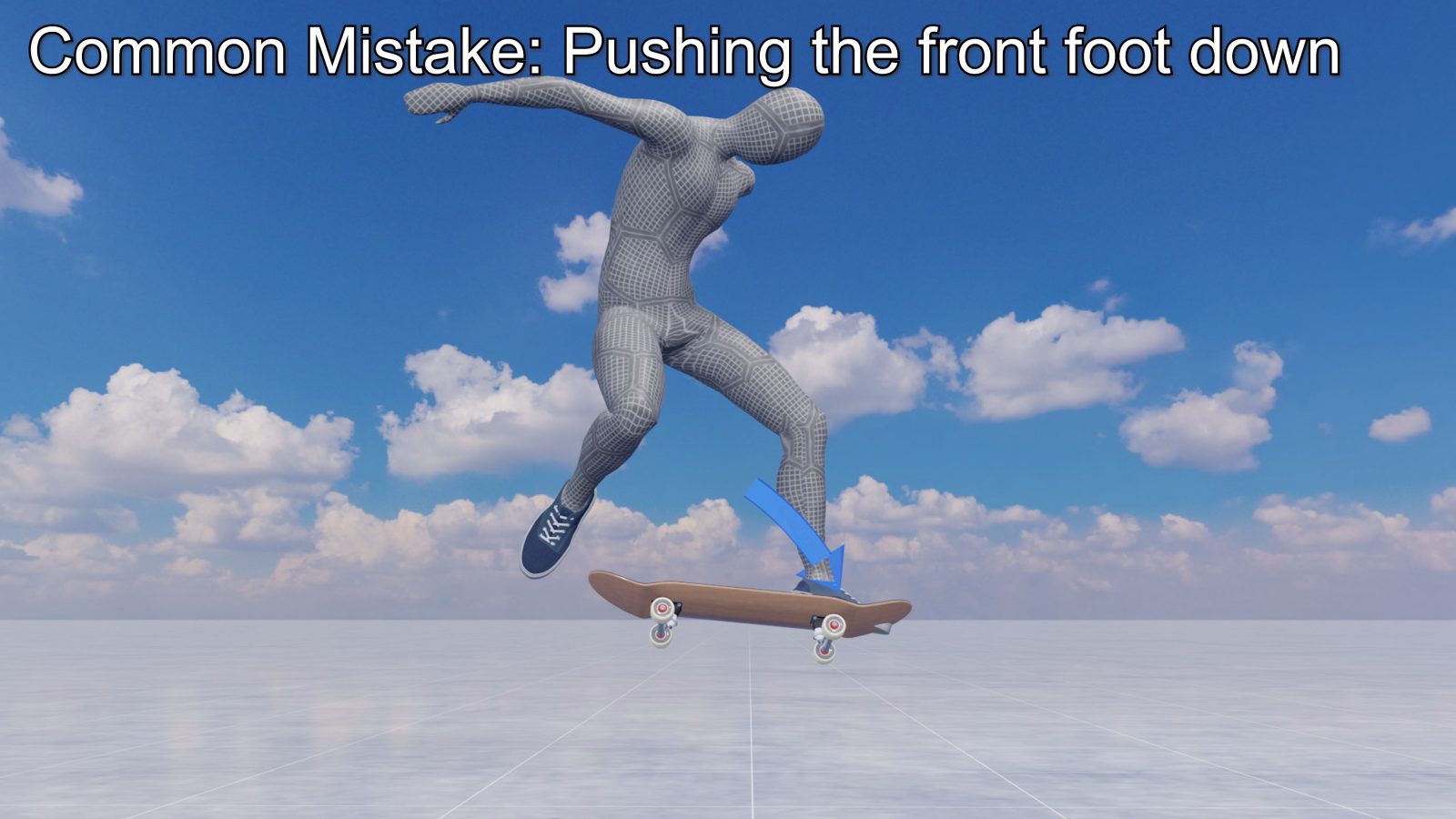
Why you can't flick out your front foot
The other motion we are accustomed to, "extending the lower leg forward," is also tricky. If you extend your lower leg toward the toe, you will push and stagger the X-axis. As a result, you won't be able to generate a perpendicular force to the X-axis, and the board will only stick to your front foot without flipping.

How to flip the board effectively
The secret is in the common practice
The key is hiding in the common practice where you stand on the ground and flick the nose while holding the tail with your back foot. You must have felt flicking is easier in this practice. This is exactly where the secret of Kickflip lies.
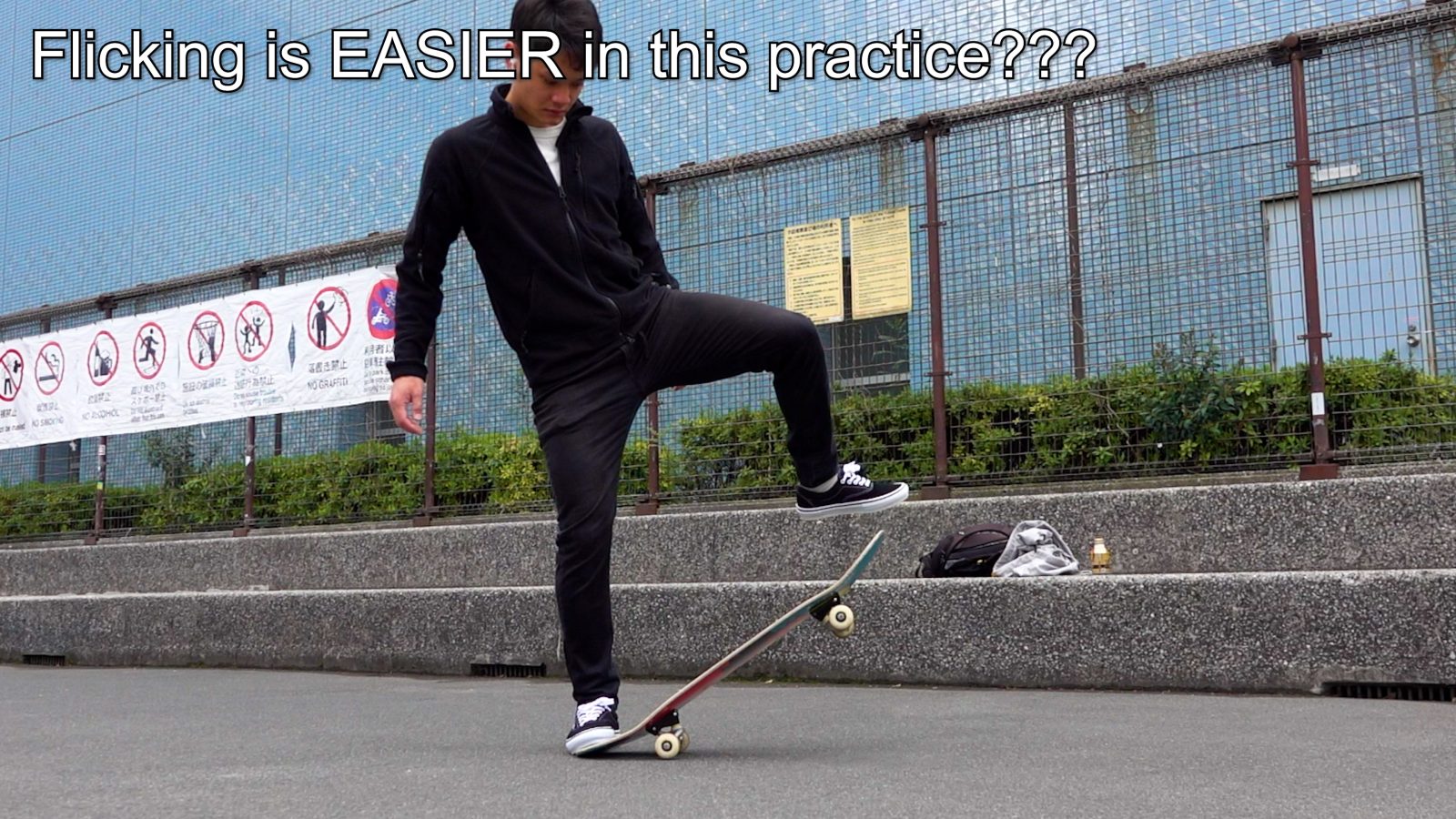
Opening the front knee makes it easier to flick
In this practice, your hip joint and knee are open, making it easier to control your lower leg horizontally without having to flick it down. Also, even when you extend your lower leg, the front foot does not interfere with the X-axis, allowing the force to escape to the side of the nose. In other words, it is important to have your front knee and hip joint open in order to flick your board effectively.
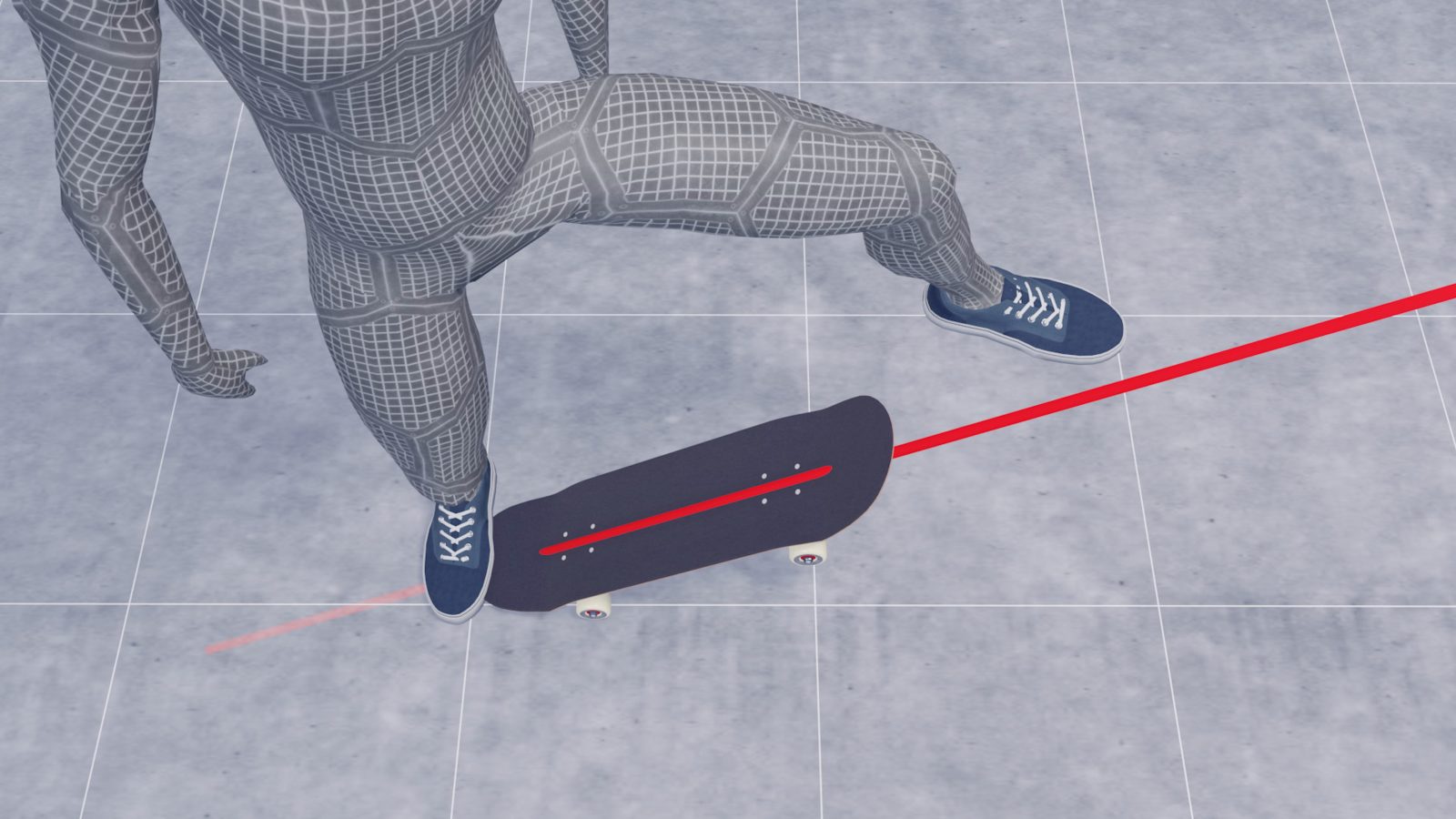
The downside of keeping the front knee closed
Conversely, if the knee remains closed when flicking, you will have to push it diagonally downward. It makes it a lot harder to flip the board and will exacerbate the kicking-down motion. Also, if you try to flip the board by extending your lower leg to avoid flicking down, the board will fly forward, or the board's axis of rotation will be off, causing a crooked Kickflip.

Chronological breakdown of a Kickflip
1. Immediately after popping the tail, the nose begins to lift in an arc.
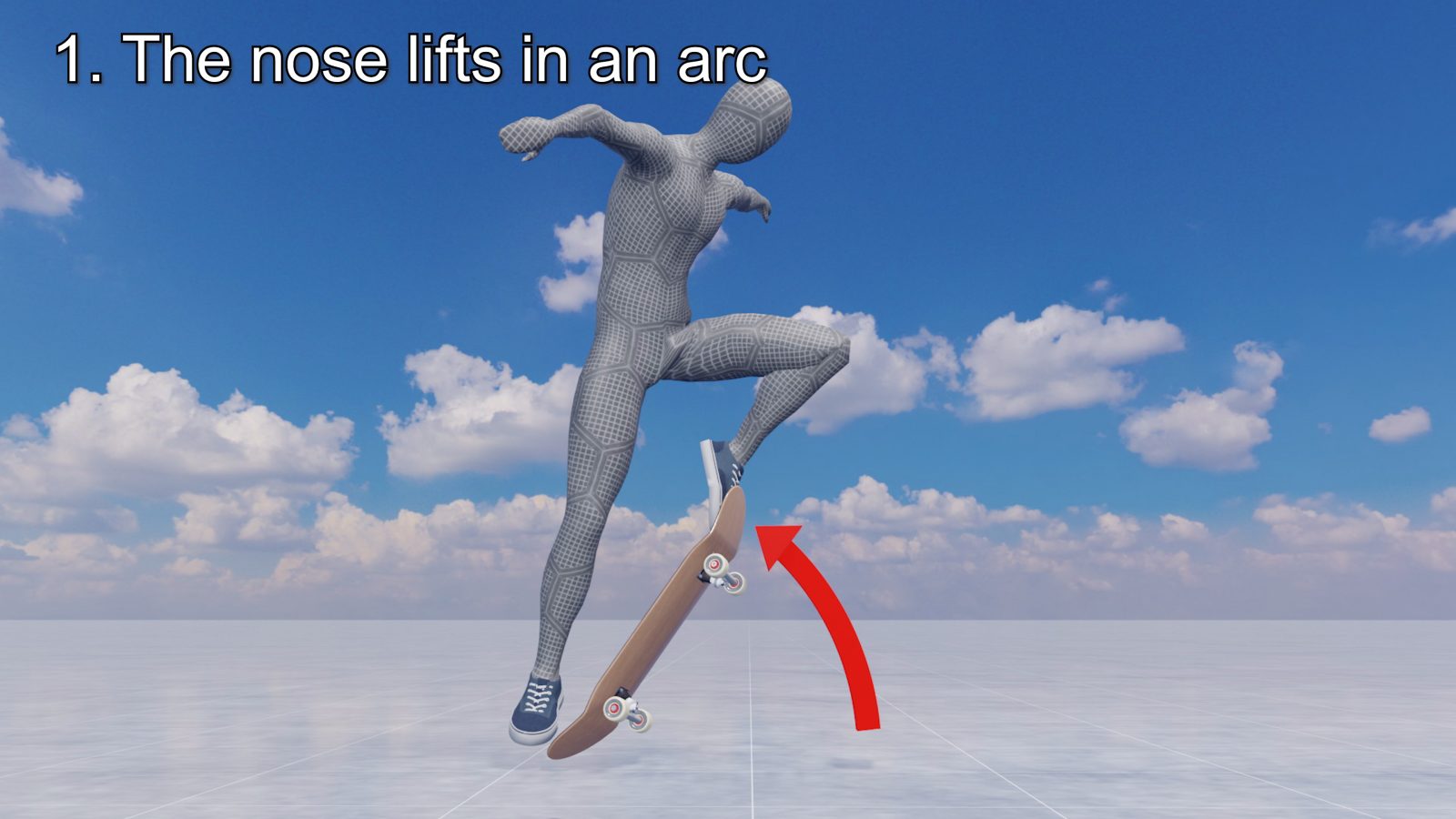
2. The front foot slides up toward the side of the nose while the front knee opens up.
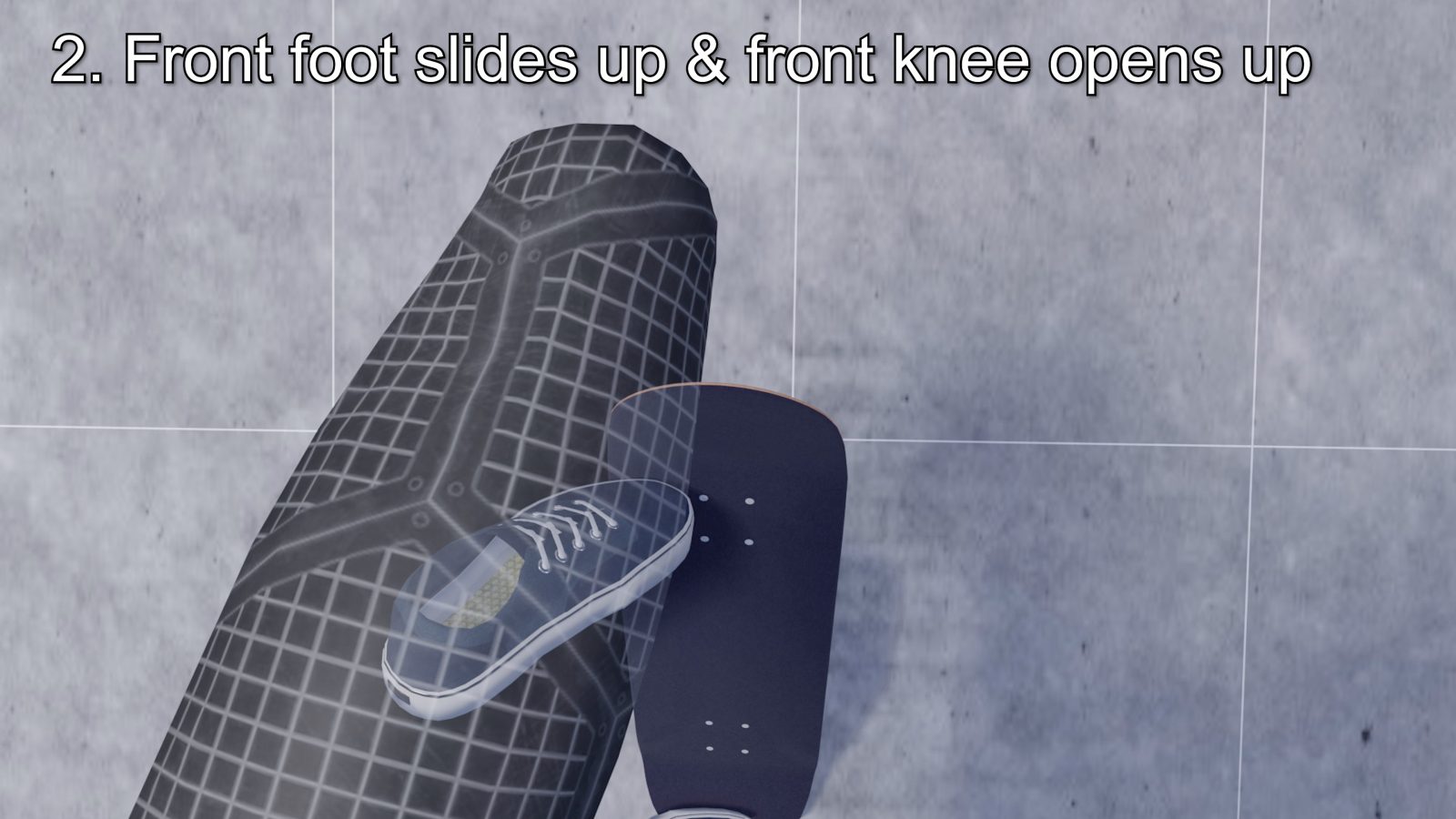
3. The force acting on the nose pushes the front toe back, bringing it closer to the body's center of gravity.

4. The force of the nose rises gradually decreases, and the lower leg starts to rotate around the front knee as it tries to return to its original state from the position where it's pushed back and combines with the force of the flick.

5. The front foot releases the force of the flick to the side of the nose since the front knee is open.

6. The toe moves around the front knee in an arc, exerting a downward force on the board.
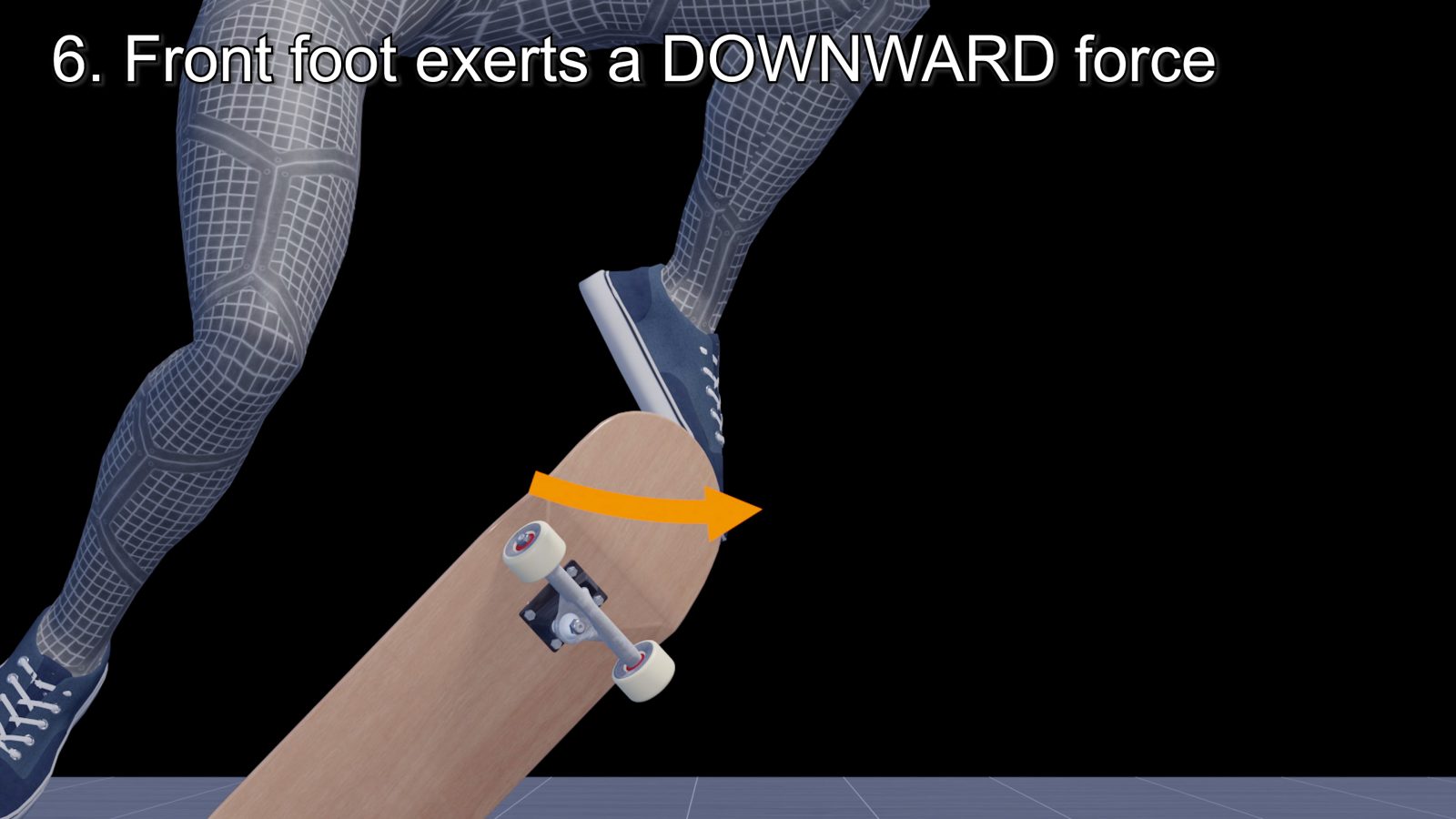
SUMMARY
Do you see what I mean? Although the process of "intentionally applying a downward force" has never occurred in the sequence, as a result, a downward force to the X-axis has been generated.

Impact of opening the front knee
NOTE
We must be careful here. As the lower leg continues to rise throughout the flicking motion, the absolute position of the toe goes up almost constantly.
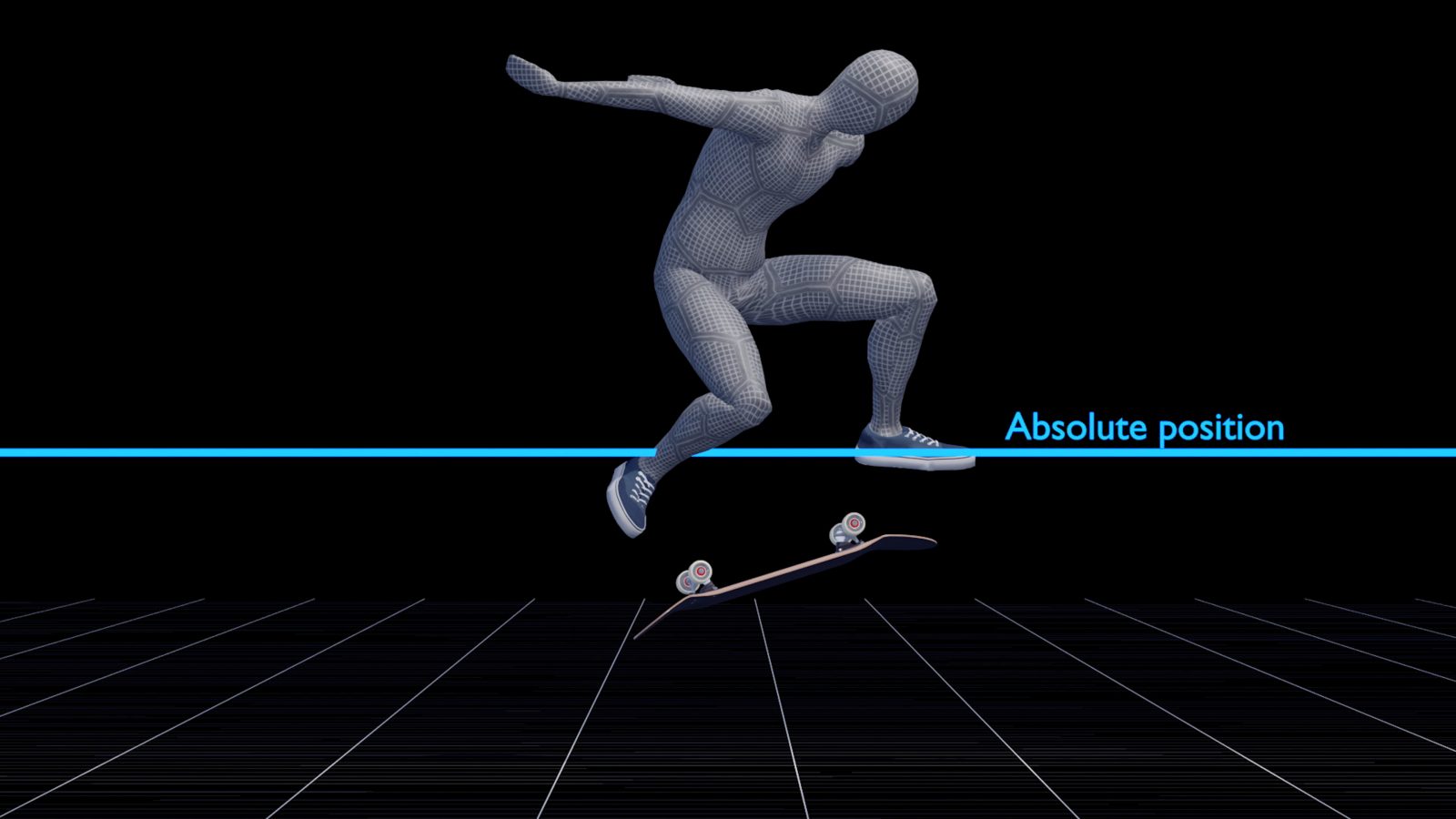
A reason flicking upward generates a downward force
However, if we focus on the rotation of the foot around the knee, we can see that the toe exerts a downward force at the moment of the flick and changes the direction of travel upward after the flicking motion. This difference between "the feeling and the actual physics that takes place" is the answer to the paradox of "applying a downward force by flicking upward."

The force of the flick escapes to the side
Furthermore, since the force escapes to the side of the nose, it only generates a perpendicular force to the X-axis and effectively flips the board without pushing or interfering with it.

When you have to extend the lower leg
How the board flips in a Varial Kickflip
Keep in mind it does not directly translate extending the lower leg is always evil. In a Varial Kickflip, for example, the board rotates in the direction of a Pop Shove-it, and you can flip the board by extending the front foot forward. Good thing no matter how hard you kick out your front foot, it will never interfere with the X-axis.

Two types of flicks in skateboarding
In other words, there are two types of flicks: one generated by extending the lower leg and the other by opening the front knee. And you have to choose which one to use depending on the trick you are attempting.
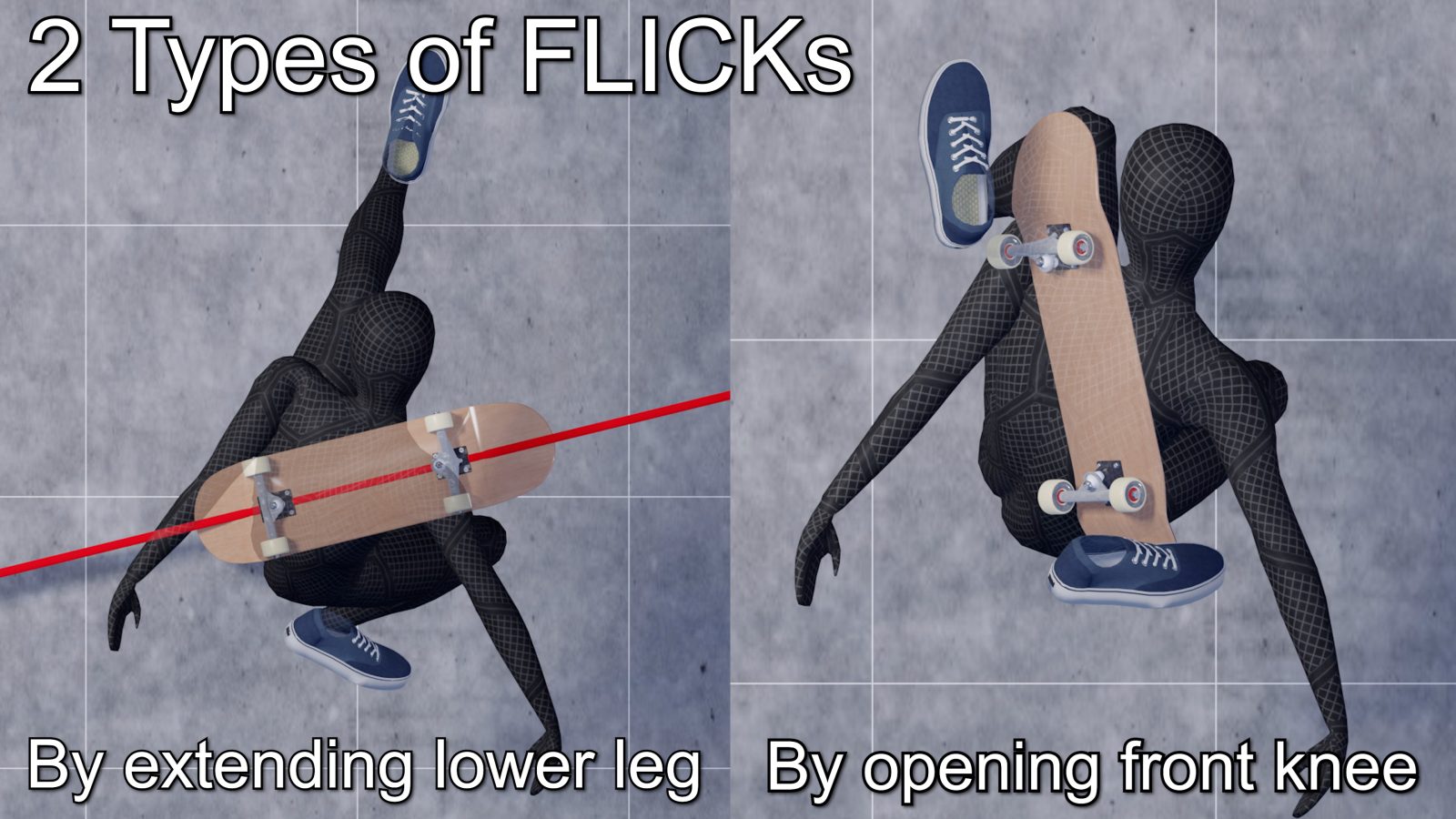
Other factors
When do you flick in a kickflip?
If the board doesn't flip properly even when you open your front knee, you may need to reconsider the timing. Let's go back in time again. Right after the pop, the board is nearly horizontal, and the entire front leg lifts rapidly. At this time, no matter how strongly you flick out your front foot, it only exerts a parallel force to the X-axis, and you cannot generate a rotational force on the board.
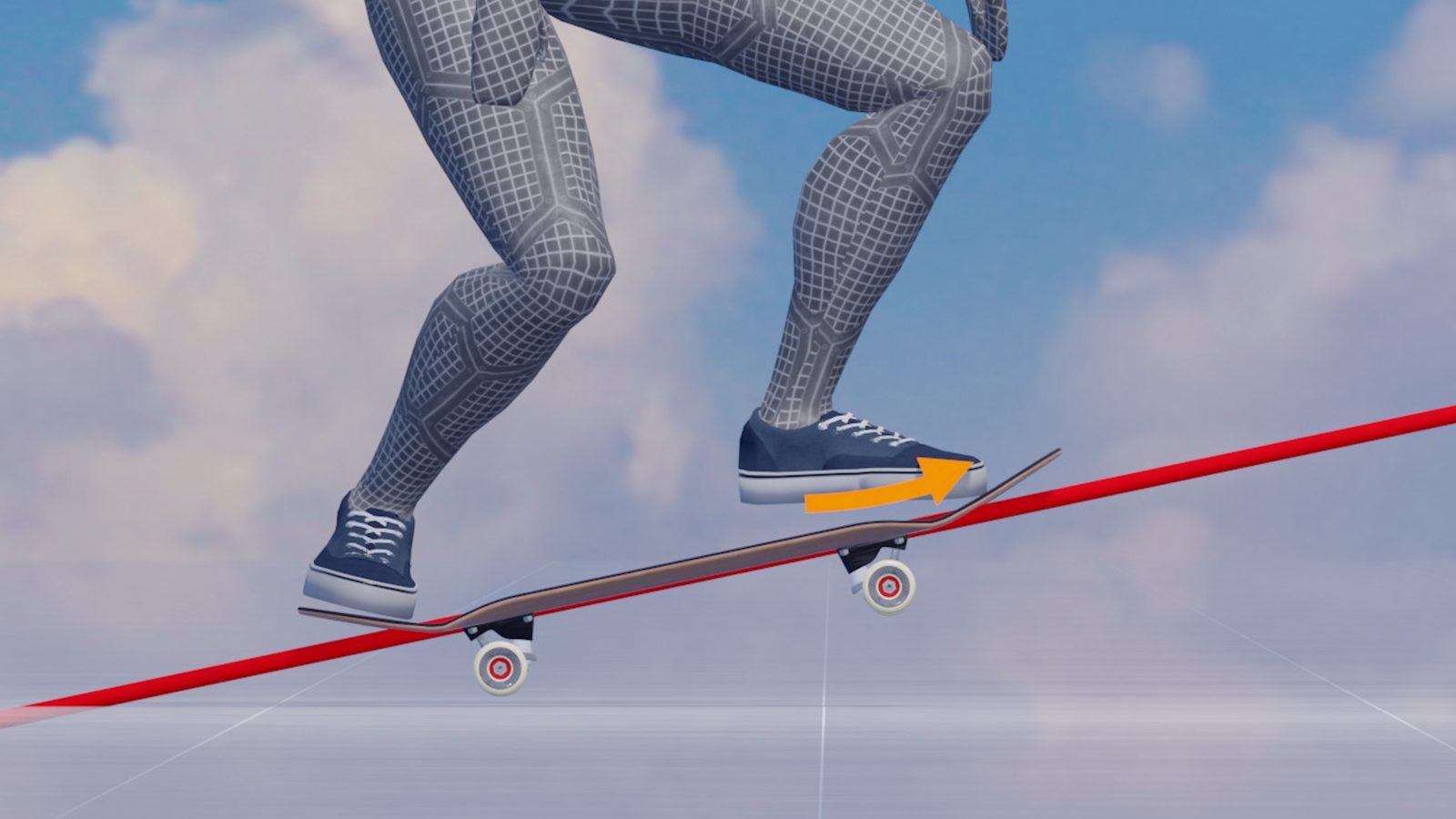
Do you wait before flicking?
As we all conceive the timing differently, some people say, "Wait before flicking," while others say, "Continue moving the front foot throughout the flicking motion." However, one thing that is common from a physics perspective is that the board flips more efficiently after the nose rises high enough.
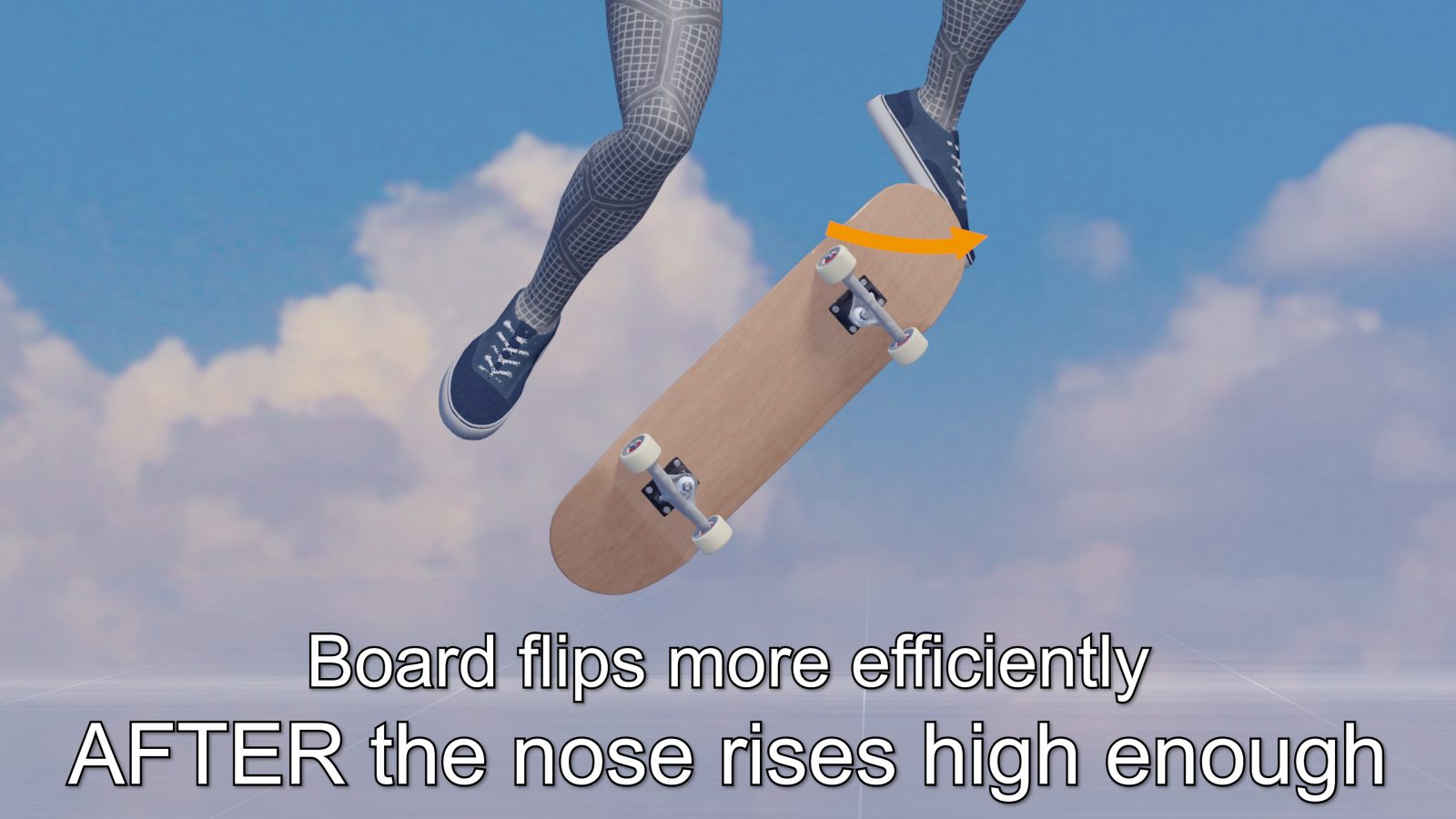
How do you pop in a Kickflip?
You can control the knee's angle not only by the timing but also by the direction of the pop. For example, when I do a low kickflip, I pop the tail while pulling it harder. This pushes the front foot back harder, bending the front knee and making it easier to create a stronger force to flick.
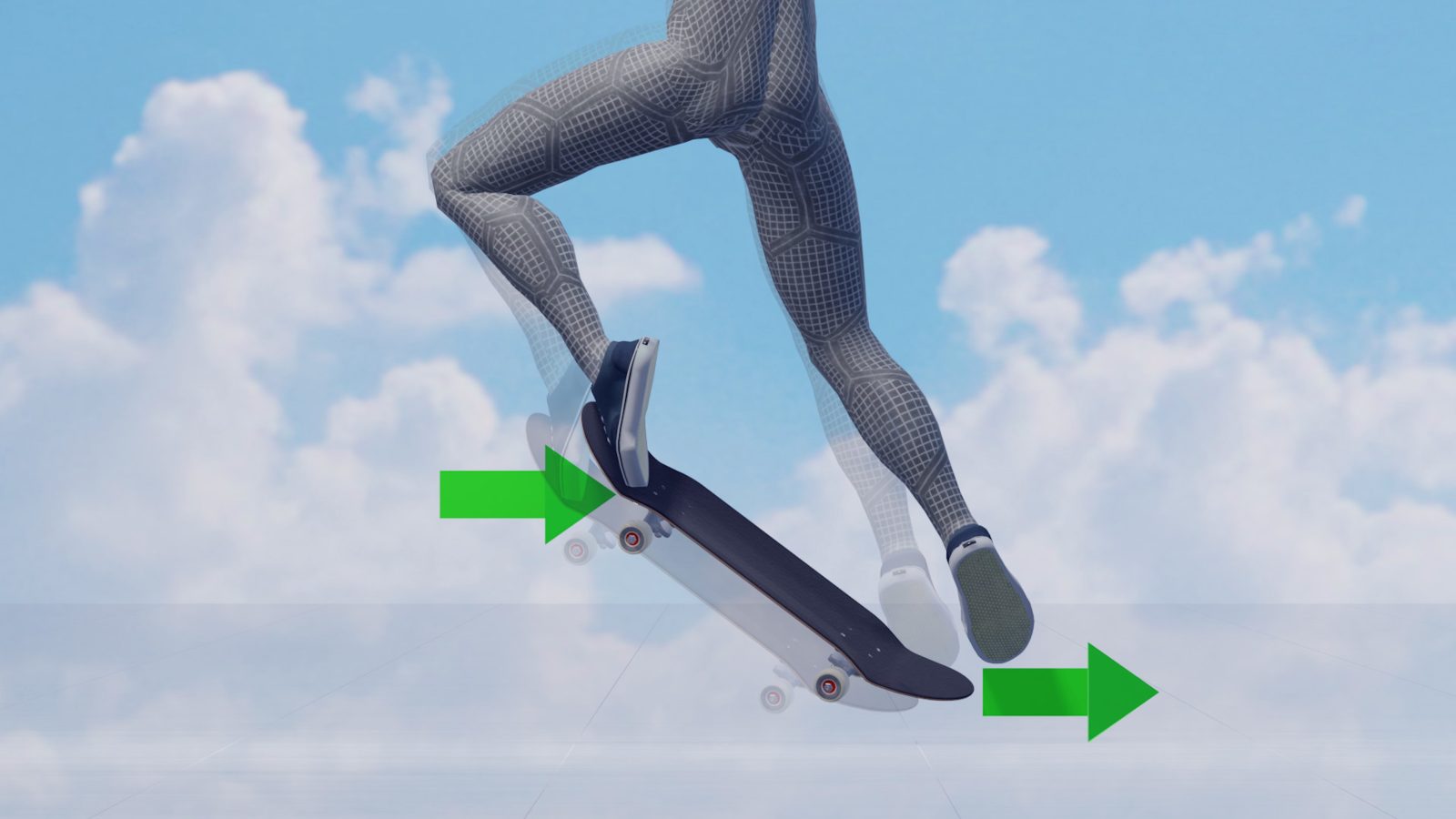
How does wearing new shoes affect in a Kickflip?
A similar phenomenon can occur when wearing new shoes. Generally, they are stiffer and have more grip, so the front foot may stop halfway up the board and might not be able to slide all the way up to the nose. Adjust the pop's direction depending on the shoe's grip to control the angle of your front knee and the position of your front foot.
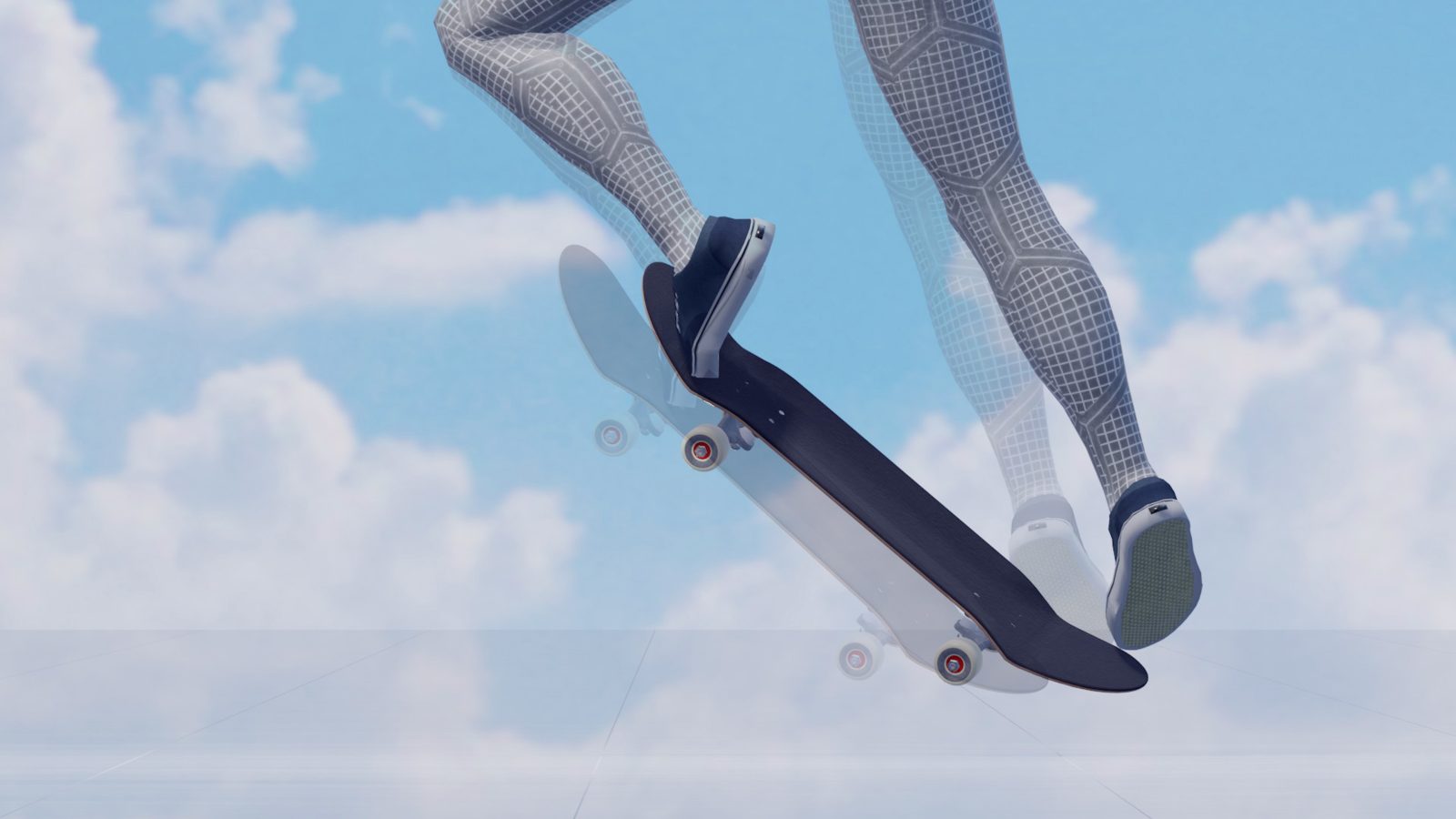
How should you use your upper body?
Finally, the way you use your upper body might also cause unexpected difficulty in flipping. If you are not used to Kickflips, you might force-lift your upper body unnecessarily high in an attempt to give the board as much air time as possible. The problem is that the lower body stretches downward in reaction, preventing the board from rising.

To solve this problem, you need to relax your upper body (which is easier said than done). If you don't believe me, try doing a kickflip with your arms down or even hands in your pockets. You should be able to flip your board way faster than usual. Please be careful not to get injured.
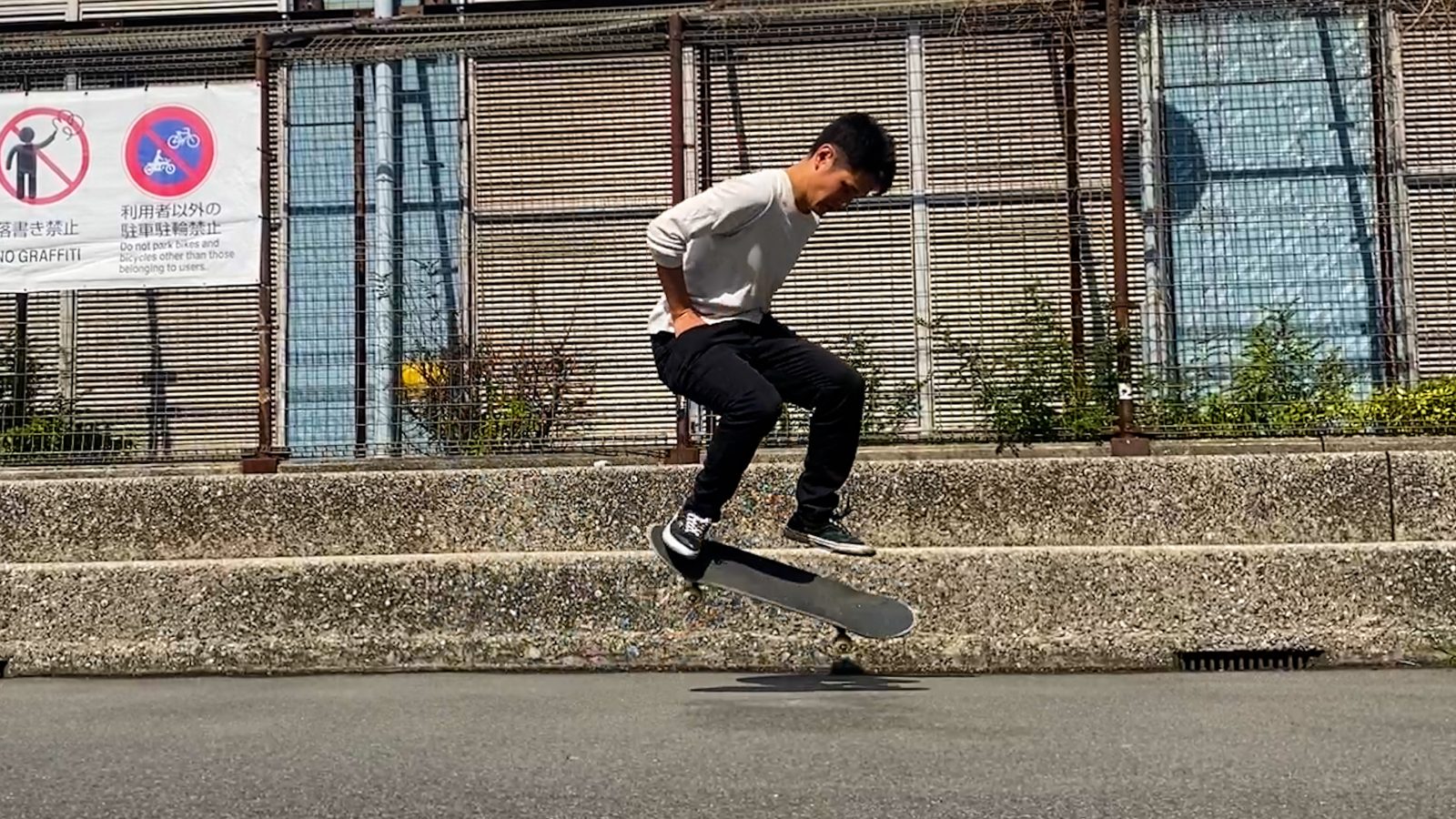

 Convert your video into 3D
Convert your video into 3D Facebook
Facebook Twitter
Twitter

